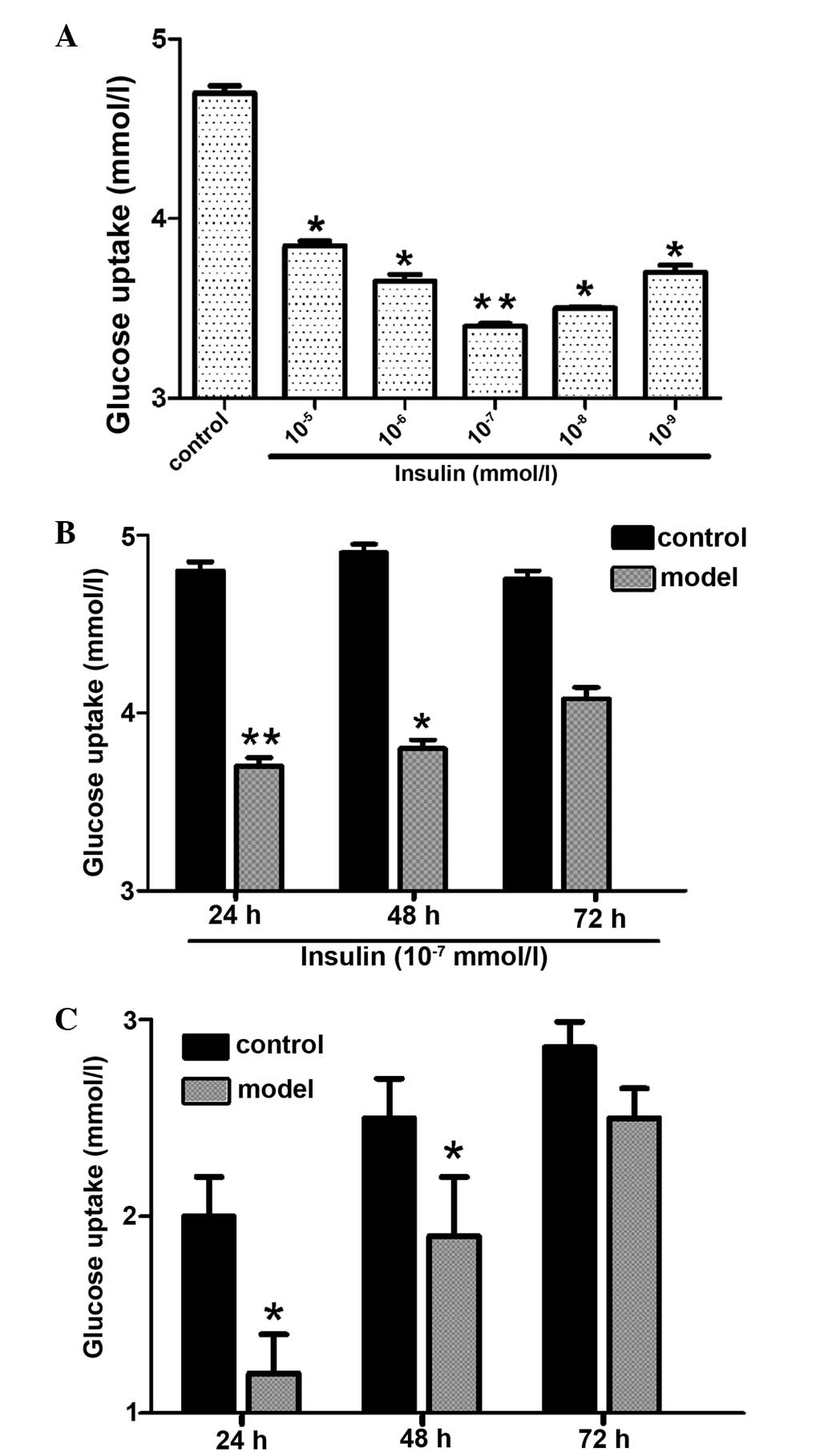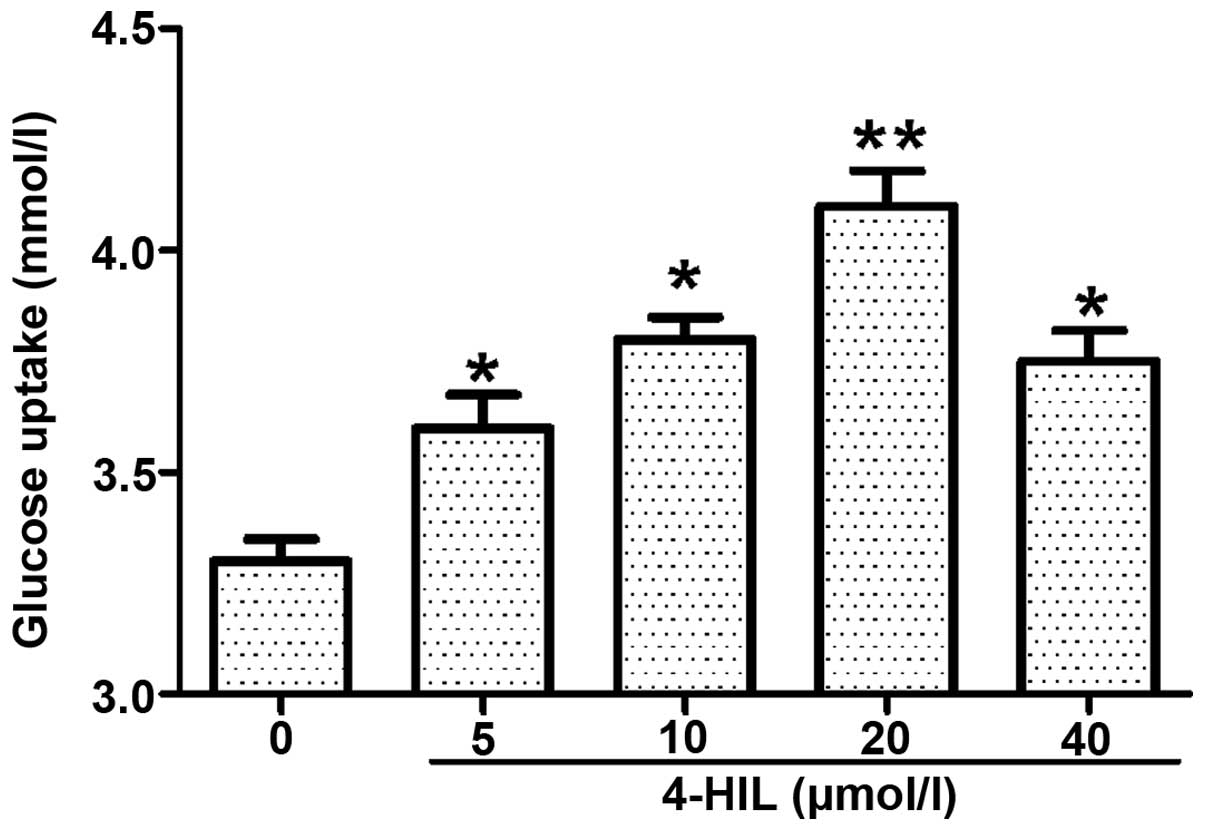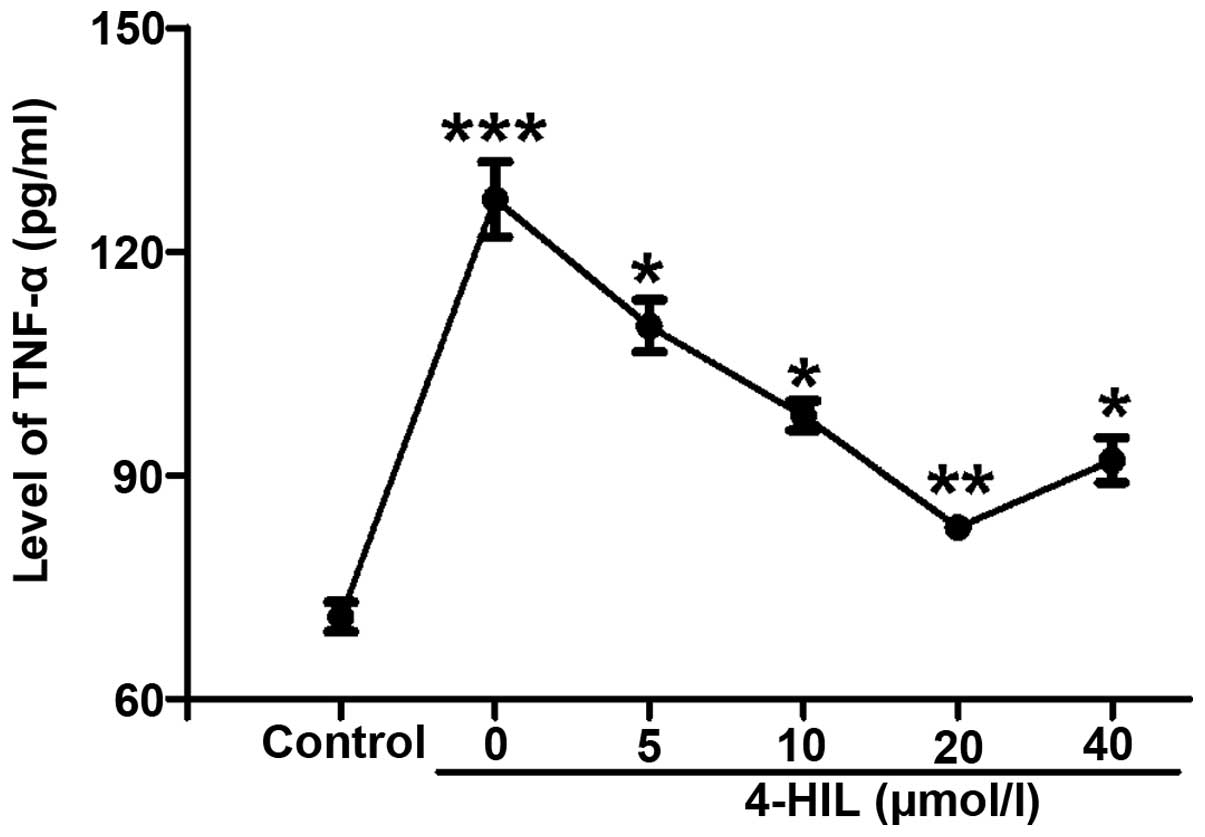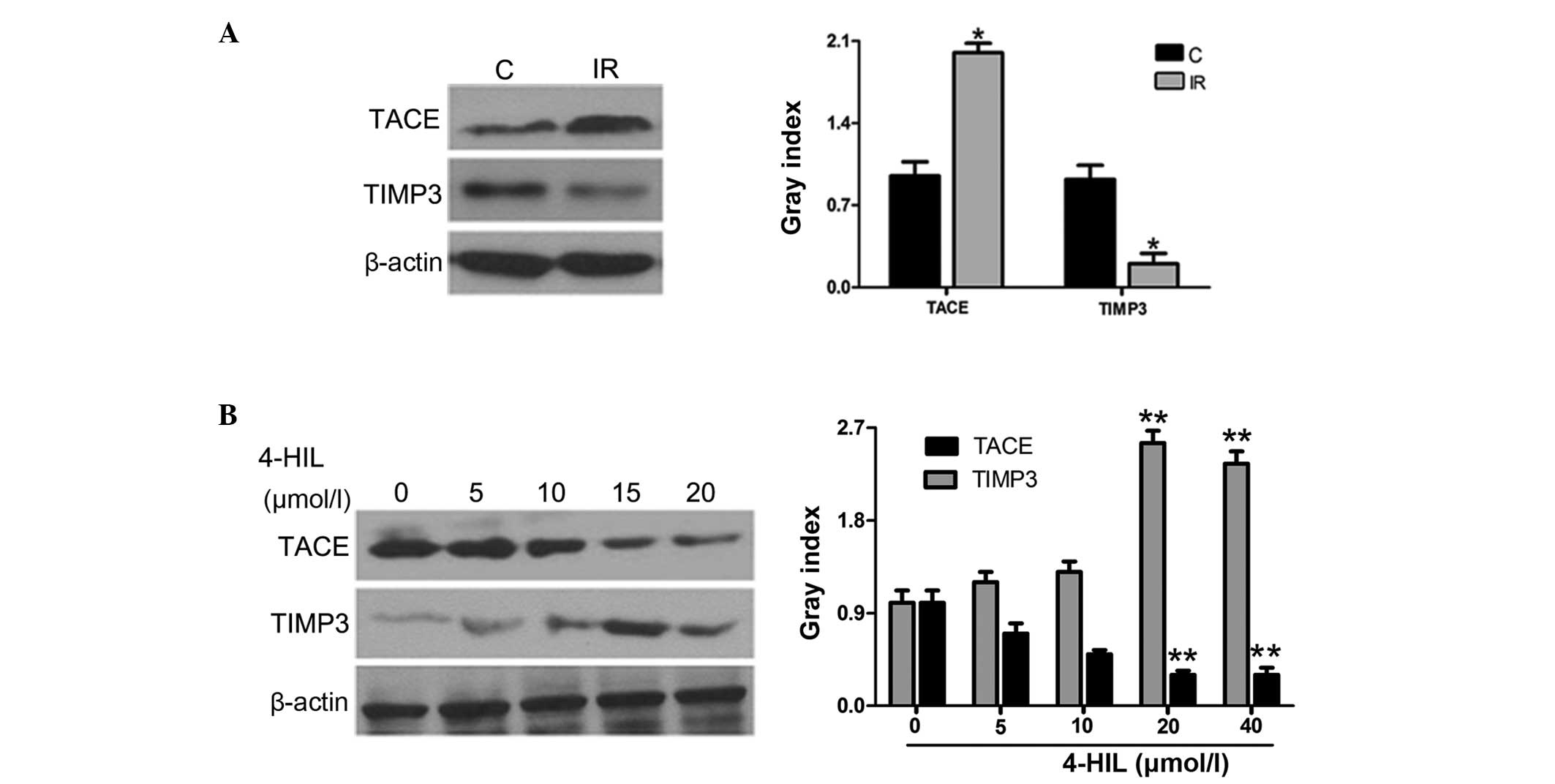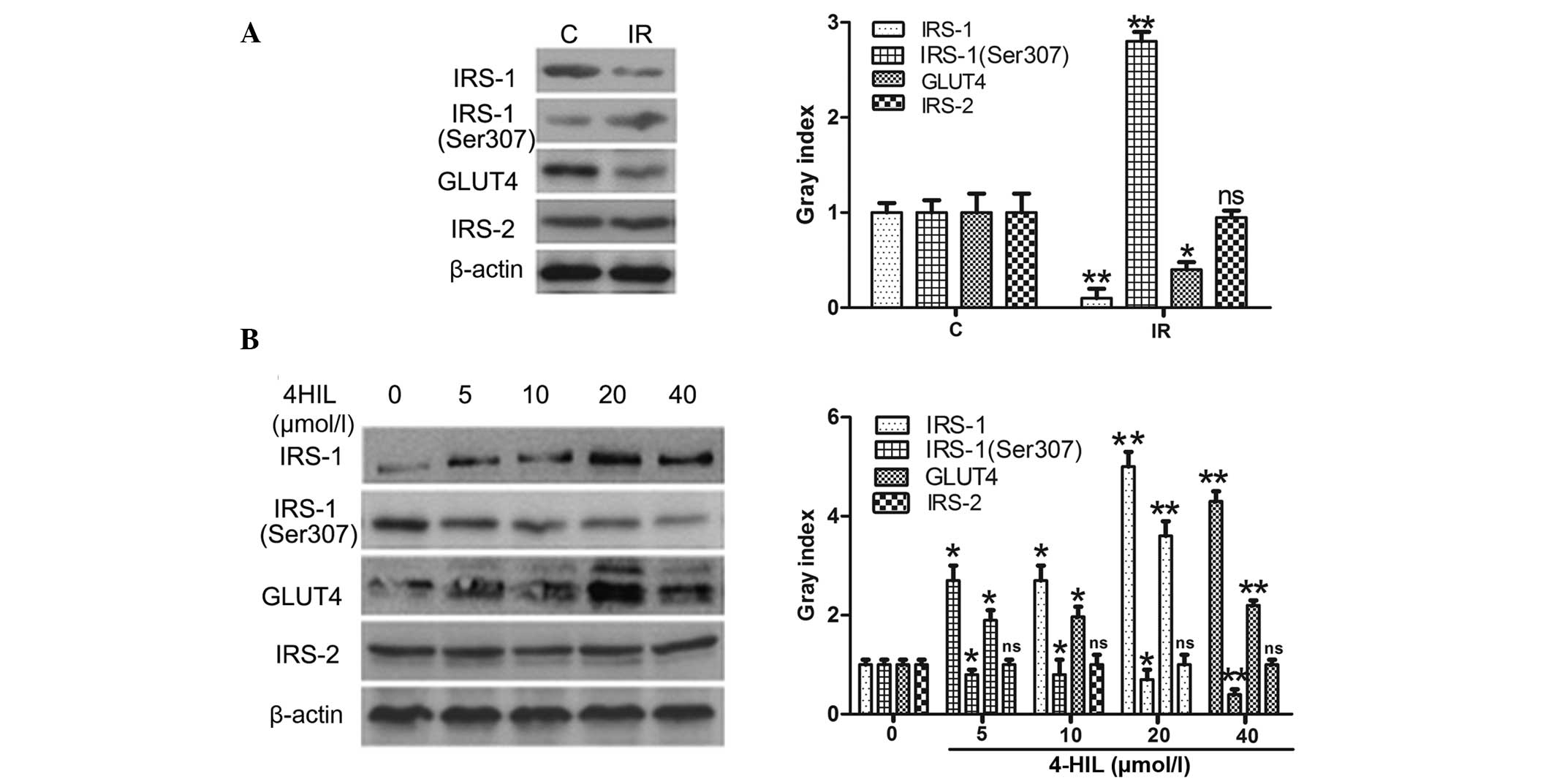|
1
|
Cordain L, Eades MR and Eades MD:
Hyperinsulinemic diseases of civilization: More than just Syndrome
X. Comp Biochem Physiol A Mol Integr Physiol. 136:95–112. 2003.
View Article : Google Scholar : PubMed/NCBI
|
|
2
|
Xie W, Wang W, Su H, Xing D, Pan Y and Du
L: Effect of ethanolic extracts of Ananas comosus L. leaves on
insulin sensitivity in rats and HepG2. Comp Biochem Physiol C
Toxicol Pharmacol. 143:429–435. 2006. View Article : Google Scholar : PubMed/NCBI
|
|
3
|
Peraldi P, Hotamisligil GS, Buurman WA,
White MF and Spiegelman BM: Tumor necrosis factor (TNF)-alpha
inhibits insulin signaling through stimulation of the p55 TNF
receptor and activation of sphingomyelinase. J Biol Chem.
271:13018–13022. 1996. View Article : Google Scholar : PubMed/NCBI
|
|
4
|
Moss ML, Jin SL, Milla ME, Bickett DM,
Burkhart W, Carter HL, Chen WJ, Clay WC, Didsbury JR, Hassler D, et
al: Cloning of a disintegrin metalloproteinase that processes
precursor tumour-necrosis factor-alpha. Nature. 385:733–736. 1997.
View Article : Google Scholar : PubMed/NCBI
|
|
5
|
Bu R, Borysenko CW, Li Y, Cao L, Sabokbar
A and Blair HC: Expression and function of TNF-family proteins and
receptors in human osteoblasts. Bone. 33:760–770. 2003. View Article : Google Scholar : PubMed/NCBI
|
|
6
|
Moreira AP, Dias-Melicio LA, Peraçoli MT,
Calvi SA and Victoriano de Campos Soares AM: Killing of
Paracoccidioides brasiliensis yeast cells by IFN-gamma and
TNF-alpha activated murine peritoneal macrophages: Evidence of H
(2)O (2) and NO effector mechanisms. Mycopathologia. 166:17–23.
2008. View Article : Google Scholar : PubMed/NCBI
|
|
7
|
Takahashi E, Okumura A, Unoki-Kubota H,
Hirano H, Kasuga M and Kaburagi Y: Differential proteome analysis
of serum proteins associated with the development of type 2
diabetes mellitus in the KK-A(y) mouse model using the iTRAQ
technique. J Proteomics. 84:40–51. 2013. View Article : Google Scholar : PubMed/NCBI
|
|
8
|
Saghizadeh M, Ong JM, Garvey WT, Henry RR
and Kern PA: The expression of TNF alpha by human muscle.
Relationship to insulin resistance. J Clin Invest. 97:1111–1116.
1996. View Article : Google Scholar : PubMed/NCBI
|
|
9
|
Katsuki A, Sumida Y, Murashima S, Murata
K, Takarada Y, Ito K, Fujii M, Tsuchihashi K, Goto H, Nakatani K
and Yano Y: Serum levels of tumor necrosis factor-alpha are
increased in obese patients with noninsulin-dependent diabetes
mellitus. J Clin Endocrinol Metab. 83:859–862. 1998.PubMed/NCBI
|
|
10
|
Rui L, Aguirre V, Kim JK, Shulman GI, Lee
A, Corbould A, Dunaif A and White MF: Insulin/IGF-1 and TNF-alpha
stimulate phosphorylation of IRS-1 at inhibitory Ser307 via
distinct pathways. J Clin Invest. 107:181–189. 2001. View Article : Google Scholar : PubMed/NCBI
|
|
11
|
del Aguila LF, Claffey KP and Kirwan JP:
TNF-alpha impairs insulin signaling and insulin stimulation of
glucose uptake in C2C12 muscle cells. Am J Physiol. 276:E849–E855.
1999.PubMed/NCBI
|
|
12
|
Krogh-Madsen R, Plomgaard P, Møller K,
Mittendorfer B and Pedersen BK: Influence of TNF-alpha and IL-6
infusions on insulin sensitivity and expression of IL-18 in humans.
Am J Physiol Endocrinol Metab. 291:E108–E114. 2006. View Article : Google Scholar : PubMed/NCBI
|
|
13
|
Tang ZY, Loss G, Carmody I and Cohen AJ:
TIMP-3 ameliorates hepatic ischemia/reperfusion injury through
inhibition of tumor necrosis factor-alpha-converting enzyme
activity in rats. Transplantation. 82:1518–1523. 2006. View Article : Google Scholar : PubMed/NCBI
|
|
14
|
Narender T, Puri A, Shweta Khaliq T,
Saxena R, Bhatia G and Chandra R: 4-hydroxyisoleucine an unusual
amino acid as anti-dyslipidemic and antihyperglycemic agent. Bioorg
Med Chem Lett. 16:293–296. 2006. View Article : Google Scholar
|
|
15
|
Jetté L, Harvey L, Eugeni K and Levens N:
4-Hydroxyisoleucine: A plant-derived treatment for metabolic
syndrome. Curr Opin Investig Drugs. 10:353–358. 2009.PubMed/NCBI
|
|
16
|
Sauvaire Y, Petit P, Broca C, Manteghetti
M, Baissac Y, Fernandez-Alvarez J, Gross R, Roye M, Leconte A,
Gomis R and Ribes G: 4-Hydroxyisoleucine: A novel amino acid
potentiator of insulin secretion. Diabetes. 47:206–210. 1998.
View Article : Google Scholar : PubMed/NCBI
|
|
17
|
Haefelé C, Bonfils C and Sauvaire Y:
Characterization of a dioxygenase from Trigonella foenum-graecum
involved in 4-hydroxyisoleucine biosynthesis. Phytochemistry.
44:563–566. 1997. View Article : Google Scholar : PubMed/NCBI
|
|
18
|
Broca C, Manteghetti M, Gross R, Baissac
Y, Jacob M, Petit P, Sauvaire Y and Ribes G: 4-Hydroxyisoleucine:
Effects of synthetic and natural analogues on insulin secretion.
Eur J Pharmacol. 390:339–345. 2000. View Article : Google Scholar : PubMed/NCBI
|
|
19
|
Broca C, Breil V, Cruciani-Guglielmacci C,
Manteghetti M, Rouault C, Derouet M, Rizkalla S, Pau B, Petit P,
Ribes G, et al: Insulinotropic agent ID-1101 (4-hydroxyisoleucine)
activates insulin signaling in rat. Am J Physiol Endocrinol Metab.
287:E463–E471. 2004. View Article : Google Scholar : PubMed/NCBI
|
|
20
|
Savage DB, Petersen KF and Shulman GI:
Mechanisms of insulin resistance in humans and possible links with
inflammation. Hypertension. 45:828–833. 2005. View Article : Google Scholar : PubMed/NCBI
|
|
21
|
Haeri MR, Izaddoost M, Ardekani MR, Nobar
MR and White KN: The effect of fenugreek 4-hydroxyisoleucine on
liver function biomarkers and glucose in diabetic and fructose-fed
rats. Phytother Res. 23:61–64. 2009. View
Article : Google Scholar
|
|
22
|
Henkel J, Neuschäfer-Rube F,
Pathe-Neuschäfer-Rube A and Püschel GP: Aggravation by
prostaglandin E2 of interleukin-6-dependent insulin resistance in
hepatocytes. Hepatology. 50:781–790. 2009. View Article : Google Scholar : PubMed/NCBI
|
|
23
|
Ogawa J, Kodera T, Smirnov SV, Hibi M,
Samsonova NN, Koyama R, Yamanaka H, Mano J, Kawashima T, Yokozeki K
and Shimizu S: A novel L-isoleucine metabolism in Bacillus
thuringiensis generating (2S,3R,4S)-4-hydroxyisoleucine, a
potential insulinotropic and anti-obesity amino acid. Appl
Microbiol Biotechnol. 89:1929–1938. 2011. View Article : Google Scholar
|
|
24
|
Zhang WY, Lee JJ, Kim IS, Kim Y, Park JS
and Myung CS: 7-O-methylaromadendrin stimulates glucose uptake and
improves insulin resistance in vitro. Biol Pharm Bull.
33:1494–1499. 2010. View Article : Google Scholar : PubMed/NCBI
|
|
25
|
Khan AH and Pessi JE: Insulin regulation
of glucose uptake: A complex interplay of intracellular signalling
pathways. Diabetologia. 45:1475–1483. 2002. View Article : Google Scholar : PubMed/NCBI
|
|
26
|
Wang Q, Somwar R, Bilan PJ, Liu Z, Jin J,
Woodgett JR and Klip A: Protein kinase B/Akt participates in GLUT4
translocation by insulin in L6 myoblasts. Mol Cell Biol.
19:4008–4018. 1999. View Article : Google Scholar : PubMed/NCBI
|
|
27
|
Miura A, Ishizuka T, Kanoh Y, Ishizawa M,
Itaya S, Kimura M, Kajita K and Yasuda K: Effect of tumor necrosis
factor-alpha on insulin signal transduction in rat adipocytes:
Relation to PKCbeta and zeta translocation. Biochim Biophys Acta.
1449:227–238. 1999. View Article : Google Scholar : PubMed/NCBI
|
|
28
|
Tal R, Pavlovsky L and David M: Psoriasis
and cardiovascular risk factors. Harefuah. 151:573–575. 2012.In
Hebrew.
|
|
29
|
Xin-Long C, Zhao-Fan X, Dao-Feng B and Wei
D: mTOR partly mediates insulin resistance by phosphorylation of
insulin receptor substrate-1 on serine (307) residues after burn.
Burns. 37:86–93. 2011. View Article : Google Scholar
|
|
30
|
Hotamisligil GS, Peraldi P, Budavari A,
Ellis R, White MF and Spiegelman BM: IRS-1-mediated inhibition of
insulin receptor tyrosine kinase activity in TNF-alpha- and
obesity-induced insulin resistance. Science. 271:665–668. 1996.
View Article : Google Scholar : PubMed/NCBI
|
|
31
|
Monroy A, Kamath S, Chavez AO, Centonze
VE, Veerasamy M, Barrentine A, Wewer JJ, Coletta DK, Jenkinson C,
Jhingan RM, et al: Impaired regulation of the TNF-alpha converting
enzyme/tissue inhibitor of metalloproteinase 3 proteolytic system
in skeletal muscle of obese type 2 diabetic patients: A new
mechanism of insulin resistance in humans. Diabetologia.
52:2169–2181. 2009. View Article : Google Scholar : PubMed/NCBI
|
|
32
|
Federici M, Hribal ML, Menghini R, Kanno
H, Marchetti V, Porzio O, Sunnarborg SW, Rizza S, Serino M, Cunsolo
V, et al: Timp3 deficiency in insulin receptor-haploinsufficient
mice promotes diabetes and vascular inflammation via increased
TNF-alpha. J Clin Invest. 115:3494–3505. 2005. View Article : Google Scholar : PubMed/NCBI
|
|
33
|
Serino M, Menghini R, Fiorentino L,
Amoruso R, Mauriello A, Lauro D, Sbraccia P, Hribal ML, Lauro R and
Federici M: Mice heterozygous for tumor necrosis factor-alpha
converting enzyme are protected from obesity-induced insulin
resistance and diabetes. Diabetes. 56:2541–2546. 2007. View Article : Google Scholar : PubMed/NCBI
|
|
34
|
Smookler DS, Mohammed FF, Kassiri Z,
Duncan GS, Mak TW and Khokha R: Tissue inhibitor of
metalloproteinase 3 regulates TNF-dependent systemic inflammation.
J Immunol. 176:721–725. 2006. View Article : Google Scholar : PubMed/NCBI
|















